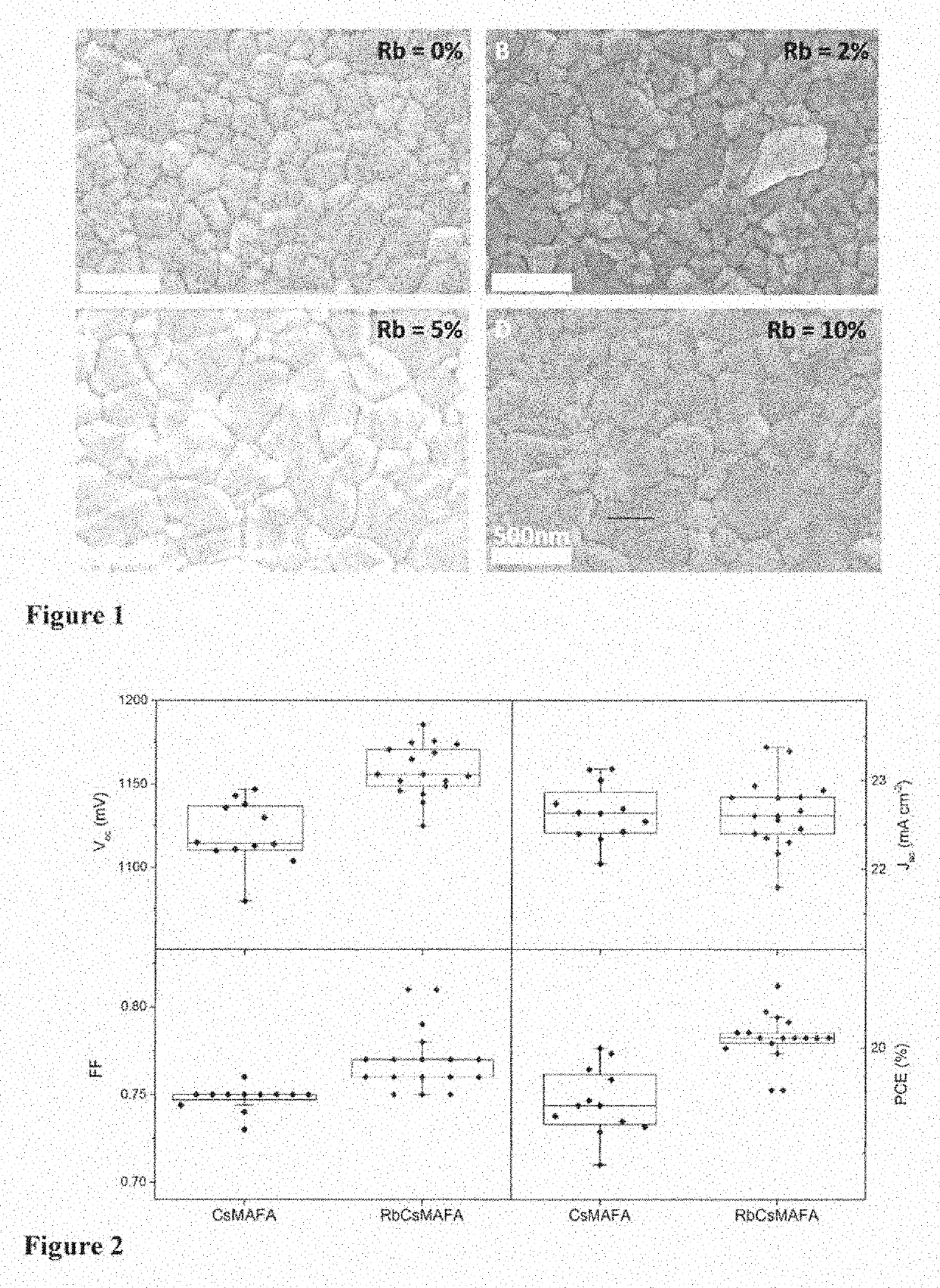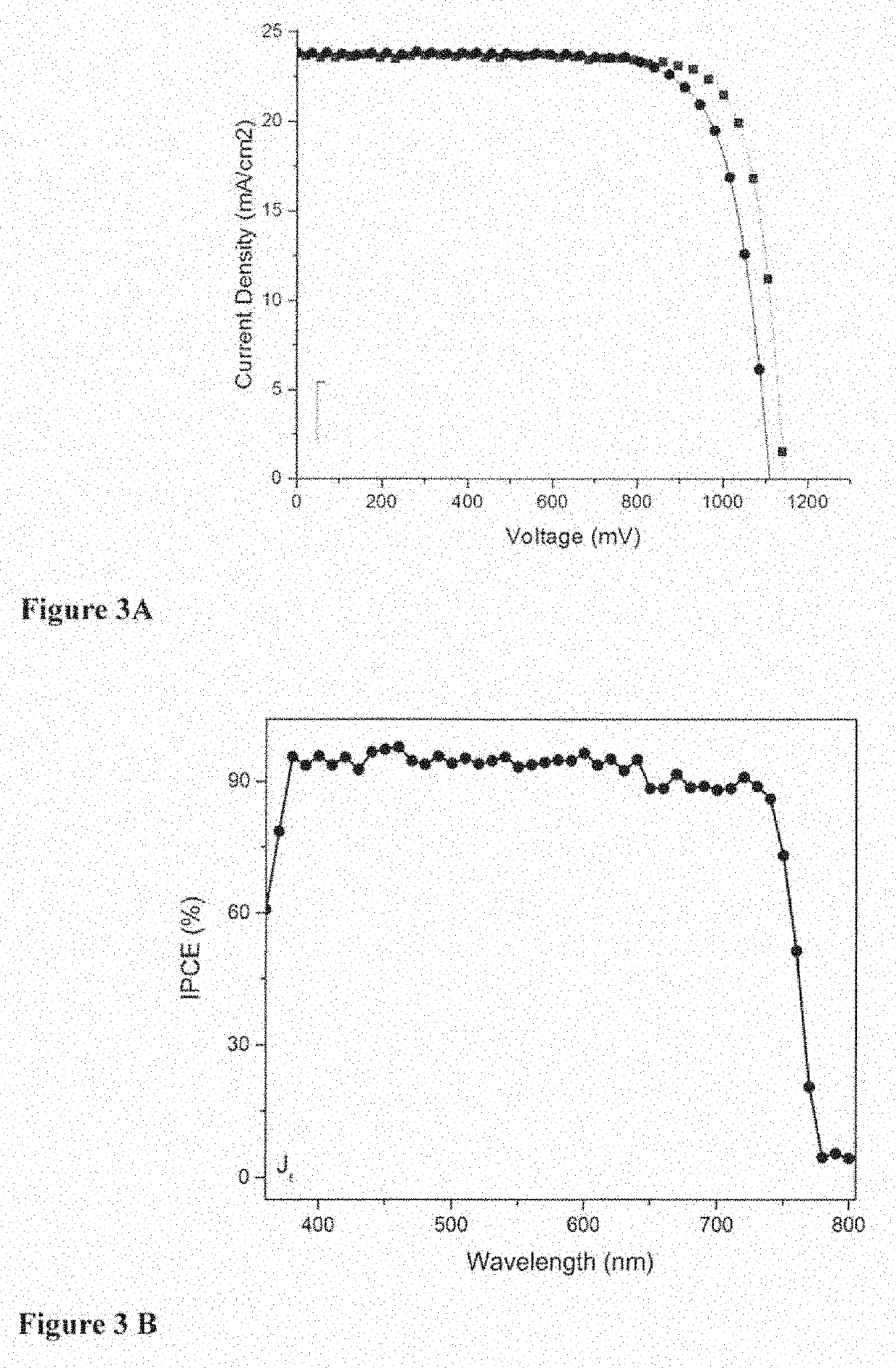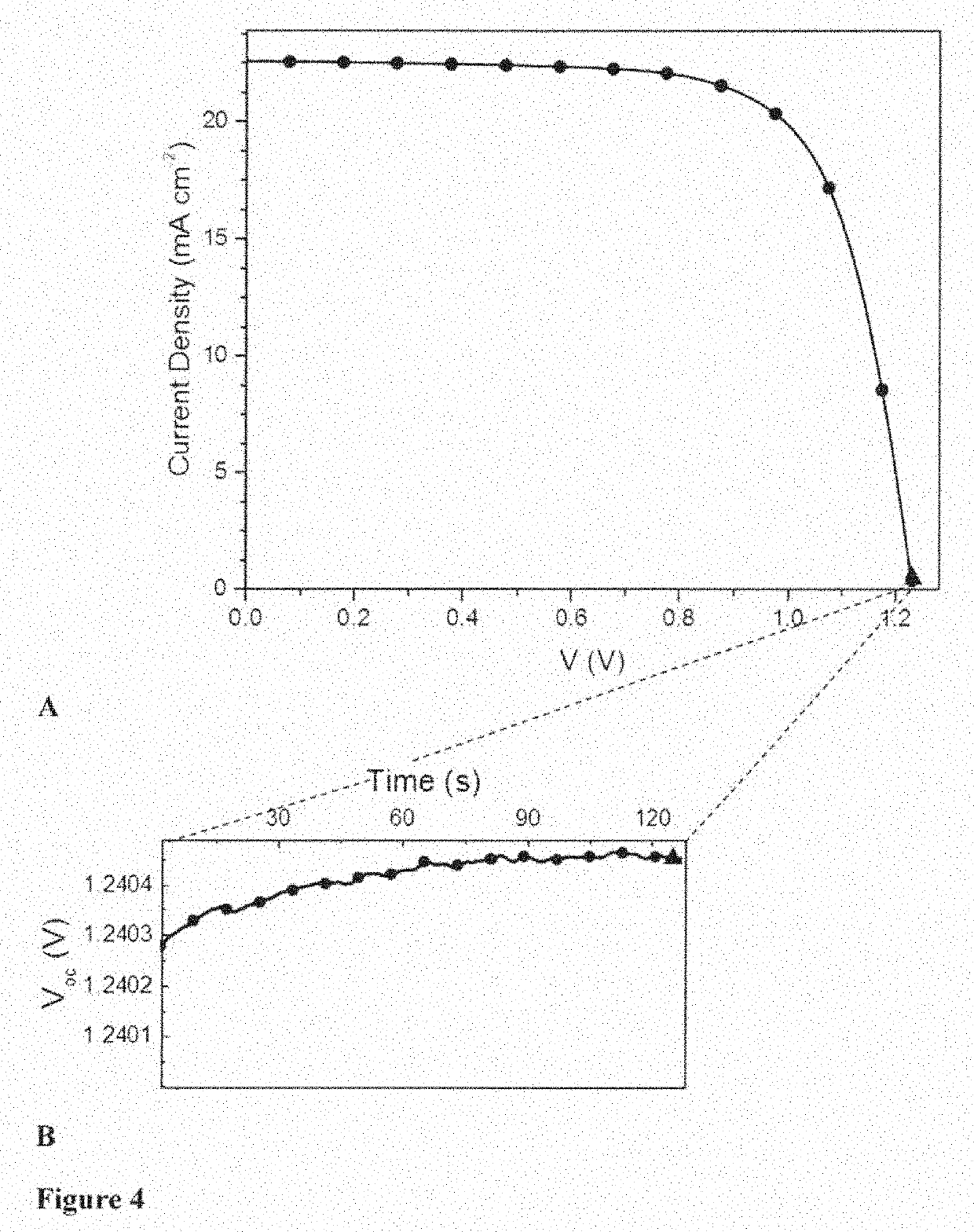Mixed cation perovskite solid state solar cell and fabrication thereof
a solar cell and mixed cation technology, applied in the field of perovskite materials, can solve the problems of reducing the efficiency of the device, so as to achieve short manufacturing procedure, efficient photovoltaic, and high efficiency
- Summary
- Abstract
- Description
- Claims
- Application Information
AI Technical Summary
Benefits of technology
Problems solved by technology
Method used
Image
Examples
examples
Solid State Solar Cell Preparation
Substrate Preparation and Li-Doping TiO2
[0115]Nippon Sheet Glass 10 Ω / sq was cleaned by sonication in 2% Hellmanex water solution for 30 min. After rinsing with deionised water and ethanol, the substrates were further cleaned with UV ozone treatment for 15 min. Then, 30 nm TiO2 compact layer was deposited on FTO via spray pyrolysis at 450° C. from a precursor solution of titanium diisopropoxide bis-(acctylacetonate) in anhydrous ethanol. After the spraying, the substrates were left at 450° C. for 45 min and left to cool down to room temperature. Then, a mesoporous TiO2 layer was deposited by spin coating for 20 s at 4000 rpm (418.88 rad / s) with a ramp of 2000 rpm s−1 (209.44 rad / s2), using a 30 nm particle paste (Dyesol 30 NR-D) diluted in ethanol to achieve 150-200 nm thick layer. After the spin coating, the substrates were dried at 100° C. for 10 min and then sintered again at 450° C. for 30 min under dry air flow.
[0116]Li-doping of mesoporous Ti...
PUM
 Login to View More
Login to View More Abstract
Description
Claims
Application Information
 Login to View More
Login to View More - R&D
- Intellectual Property
- Life Sciences
- Materials
- Tech Scout
- Unparalleled Data Quality
- Higher Quality Content
- 60% Fewer Hallucinations
Browse by: Latest US Patents, China's latest patents, Technical Efficacy Thesaurus, Application Domain, Technology Topic, Popular Technical Reports.
© 2025 PatSnap. All rights reserved.Legal|Privacy policy|Modern Slavery Act Transparency Statement|Sitemap|About US| Contact US: help@patsnap.com



